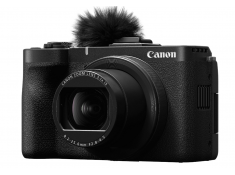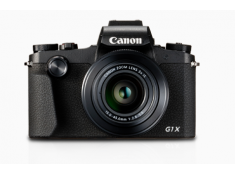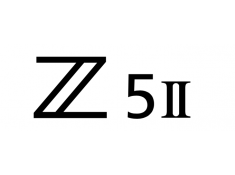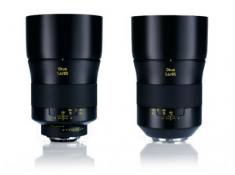Best Cameras for Portraits: Top Picks for 2025
Tuesday 29 October 2024
 655
655
 Reproduction without the author's authorization is prohibited
Reproduction without the author's authorization is prohibited
Portrait photography is an essential yet intricate art form that captures the essence of individuals. While the concept of portraiture may seem straightforward—photographing people—it encompasses a range of styles and techniques that require different equipment. Whether you’re aiming for environmental portraits, creative interpretations, standard posed shots, or studio images, the camera you choose plays a crucial role. This article will recommend the most suitable cameras for various portrait scenarios, considering both the camera body and lens options.
Best Camera for Environmental Portraits

Environmental portraits highlight the subject within their surroundings, adding context and storytelling to the image. For this style, you’ll want a camera that excels in dynamic range and low-light performance. The Fujifilm XT-5 is an excellent choice here, with its APS-C sensor and impressive color science that beautifully renders landscapes and skin tones alike. Its compact design makes it easy to carry into diverse environments, allowing for spontaneity in capturing candid moments.
Pair the XT-5 with a versatile zoom lens, like a 16-55mm f/2.8, to capture both wide scenes and close-up details of your subject while maintaining beautiful background blur. Additionally, the camera’s robust autofocus system ensures sharp images, even in challenging lighting conditions, making it a reliable option for environmental portraiture.
Best Camera for Creative Portraits

Creative portraits often push the boundaries of conventional photography, employing unique angles, unconventional lighting, and experimental techniques. Here, the Fujifilm GFX 100 shines with its medium-format sensor that delivers incredible detail and dynamic range. This camera is ideal for artists who seek to explore depth and texture in their work.
When paired with a prime lens like the GF 110mm f/2, the GFX 100 allows for striking subject isolation and artistic effects. The combination of a larger sensor and wide aperture results in stunningly sharp images with beautiful bokeh, enabling you to experiment with various creative techniques. Its extensive customization options make it a versatile tool for those looking to innovate in portrait photography.
Best Camera for Studio Portraits
Studio portraits demand precision and control, making it crucial to select a camera that performs well under controlled lighting conditions. The canon r5 mark ii is an outstanding choice, boasting a full-frame sensor that ensures high-resolution images with remarkable detail. Its impressive autofocus capabilities, including eye detection, make it particularly adept at capturing sharp, focused portraits, even in studio settings.
Pair the R5II with a 50mm f/1.2 lens for flattering perspectives and superb background blur. This combination excels in studio environments where lighting can be manipulated easily. Moreover, the camera's ability to sync seamlessly with various external lighting setups enhances its versatility, allowing photographers to achieve the desired effect effortlessly.
Best Camera for Standard Posed Portraits
Standard posed portraits require a camera that balances ease of use with high-quality output. The Nikon Z6 III fits this description perfectly. With its user-friendly interface and excellent autofocus system, the Z6 III allows for smooth operation while ensuring precise focus on your subject’s features.
A versatile lens, such as the NIKKOR Z 85mm f/1.8, is ideal for capturing standard posed portraits, allowing for both close-ups and wider shots. The Z6 III’s impressive low-light performance ensures you can shoot in various lighting conditions without sacrificing image quality. Incorporating a lens with image stabilization will also help reduce the risk of camera shake, especially in less-than-ideal scenarios, resulting in sharp, clear images that beautifully showcase your subjects.
Conclusion
Selecting the best camera for portrait photography in 2024 hinges on understanding the nuances of different portrait styles. Whether you're capturing environmental, creative, studio, or standard posed portraits, the right combination of camera body and lens can significantly influence the outcome of your work. Of course, it’s not just the lens and camera body that affect portrait photography. When you shoot portraits, tripods and filters will become your must-haves.
A tripod can greatly improve the stability of the camera. When you are shooting studio portraits and need to strictly control exposure and lighting, a stable and high-quality tripod will be a must.
Various filters will greatly enhance the possibilities of creative portrait photography. For example, when doing environmental portrait photography in high-contrast scenes, an ND filter will greatly improve the dynamic range of the photo. When you want to get a perfectly exposed portrait photo in a high-contrast environment, GND is a very good choice.
Statement: all contents and remarks made by K&F CONCEPT 's intranet friends only represent themselves and do not reflect any K&F CONCEPT 's opinions and views.
-
 Canon releases PowerShot V1 camera, 22.3mp 1.4-inch CMOSThursday 20 February 2025
Canon releases PowerShot V1 camera, 22.3mp 1.4-inch CMOSThursday 20 February 2025 -
 Canon PowerShot V1 camera specsWednesday 19 February 2025
Canon PowerShot V1 camera specsWednesday 19 February 2025 -
 Rumored:Nikon Z5 II specsMonday 17 February 2025
Rumored:Nikon Z5 II specsMonday 17 February 2025 -
 Zeiss announcing a new Otus for mirrorless camerasFriday 14 February 2025
Zeiss announcing a new Otus for mirrorless camerasFriday 14 February 2025 -
 LUMIX S1RII first spy photoWednesday 12 February 2025
LUMIX S1RII first spy photoWednesday 12 February 2025








